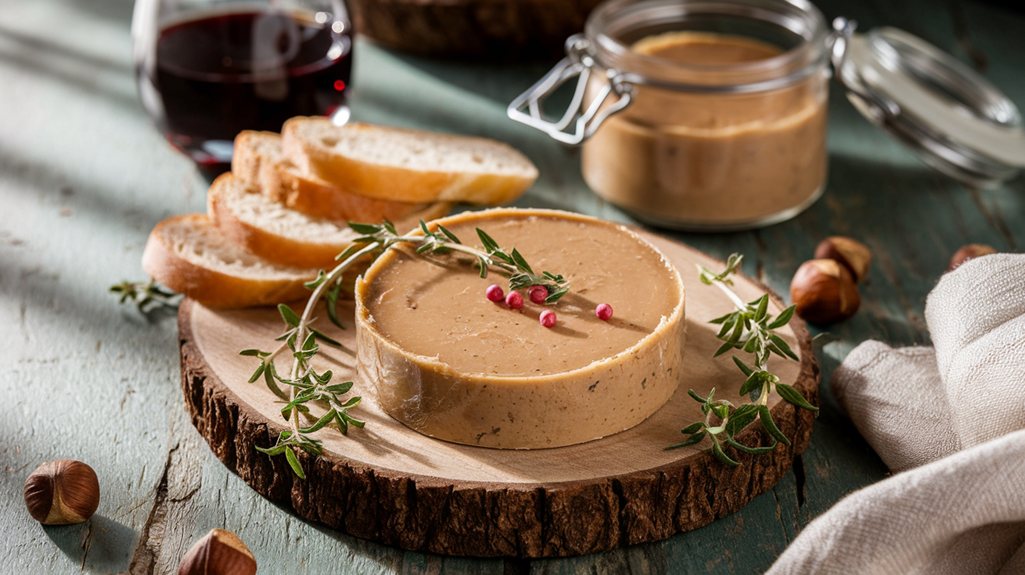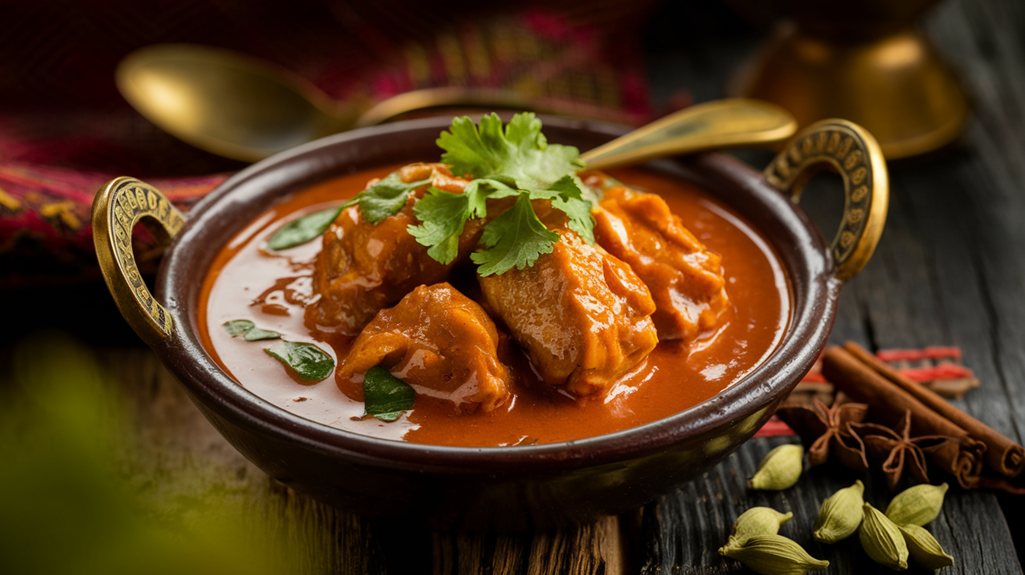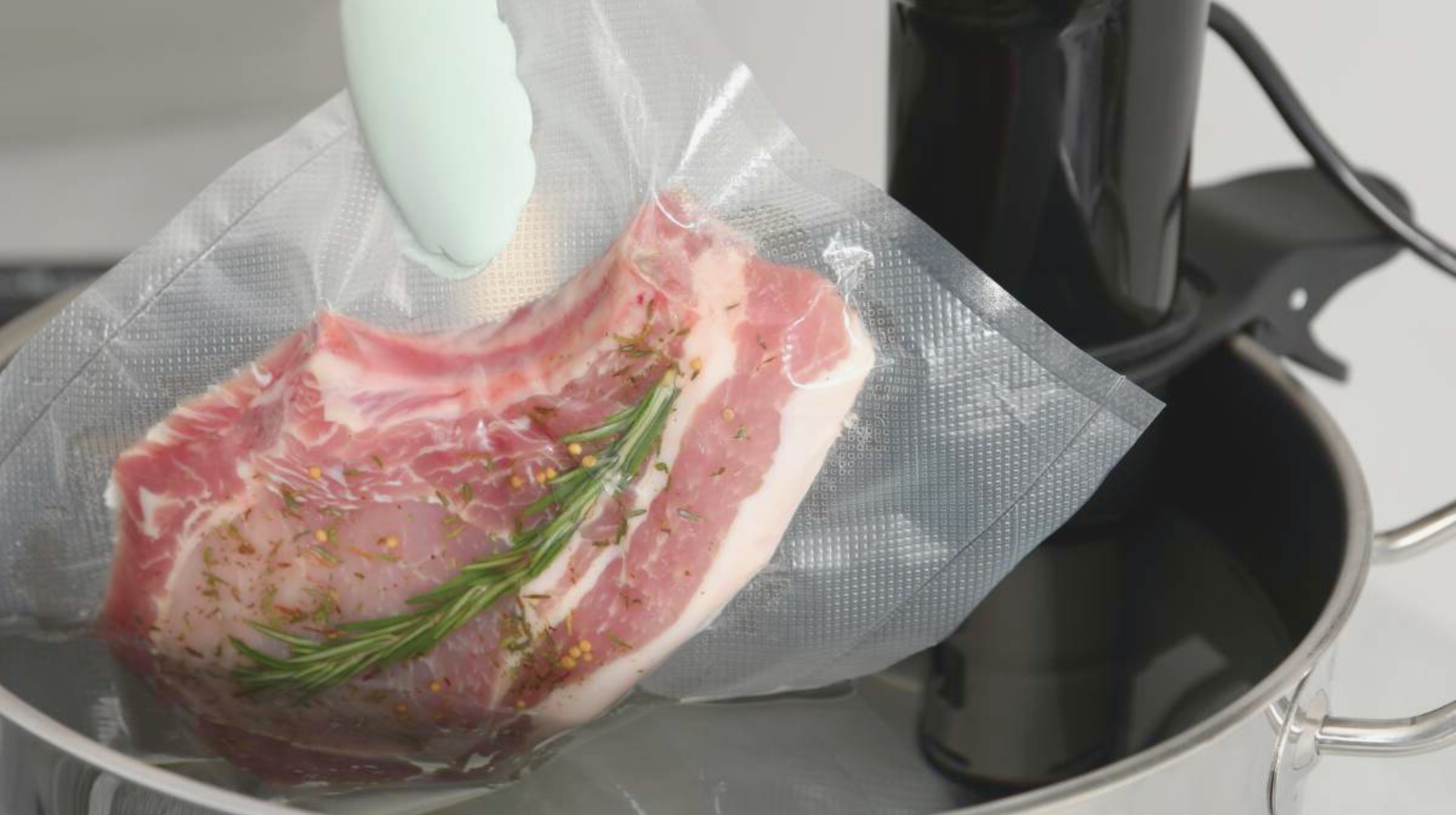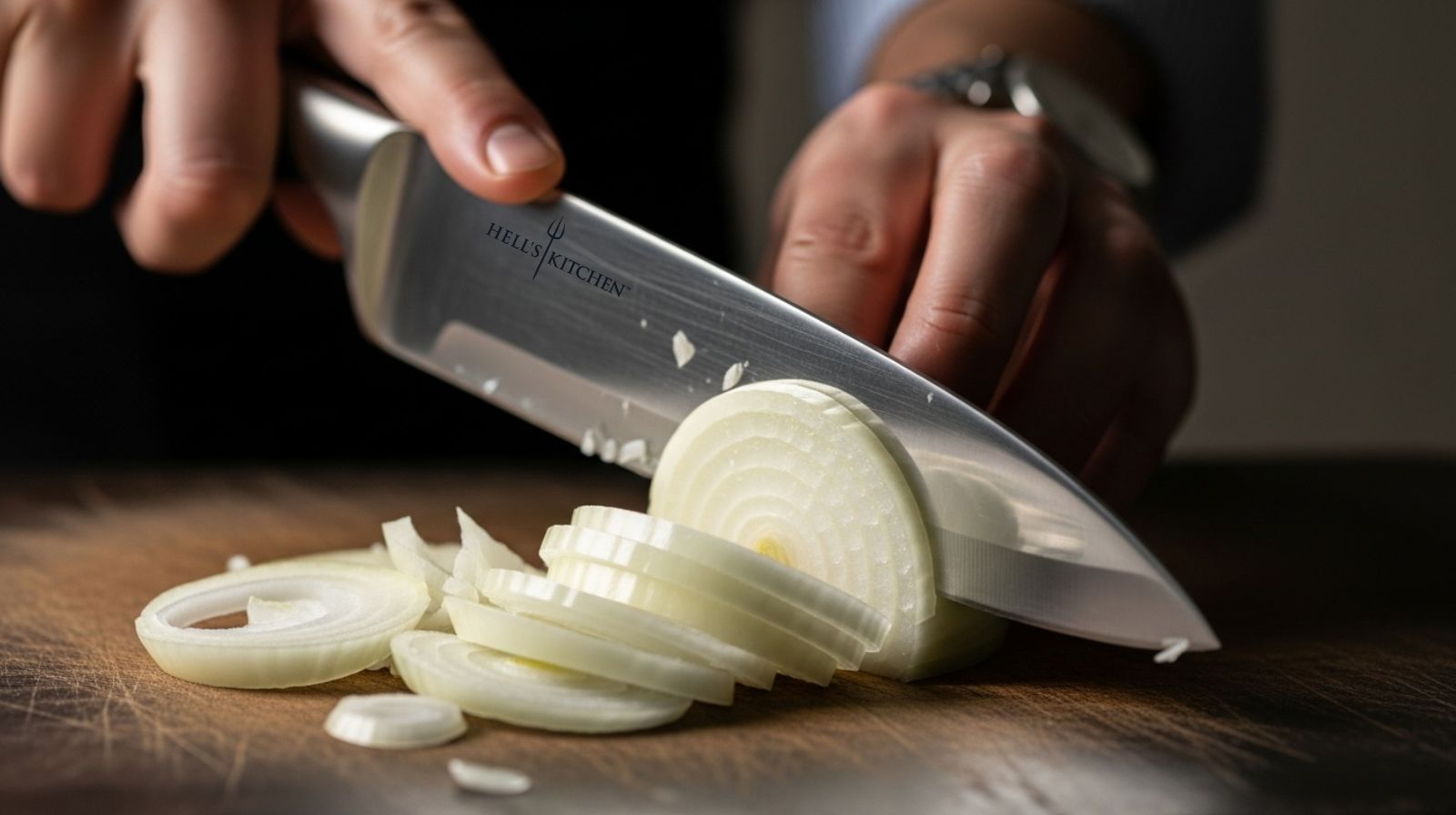You haven't lived until you've tasted Gordon Ramsay's chicken liver pâté, a dish that transforms humble ingredients into pure luxury. You'll uncover how a few quality ingredients, proper technique, and Ramsay's signature brandy-based recipe create a silky-smooth spread that rivals the finest French restaurants. While making pâté might seem intimidating, you're about to learn the secrets behind this elegant appetizer that's surprisingly achievable in your own kitchen.
French Origins, 19TH Century
While chicken liver pâté is now popular worldwide, its roots can be traced back to 19th century French cuisine, where it emerged as a staple of traditional charcuterie.
You'll find that French chefs perfected the art of creating smooth spreads by carefully cooking and processing liver into luxurious pâtés, setting standards that we still follow today.
When you make classic French pate, you're participating in a culinary tradition that began in modest French kitchens where nothing went to waste.
Much like wild mushrooms, the humble liver requires precise preparation to achieve its finest flavor.
Chicken liver pate became particularly beloved because it offered an affordable yet elegant option for families who couldn't splurge on more expensive ingredients.
Like Yukon Gold potatoes, proper technique is essential for achieving the perfect texture and consistency in pâté.
The technique of transforming humble liver into silky, sophisticated spreads showcases the ingenuity of French cooking, where modest ingredients become extraordinary through proper preparation.
Much like Gordon Ramsay's famous Beef Wellington recipe, the art of pâté-making requires meticulous attention to layering flavors and achieving the perfect texture.
Classic Peasant Food Transformed
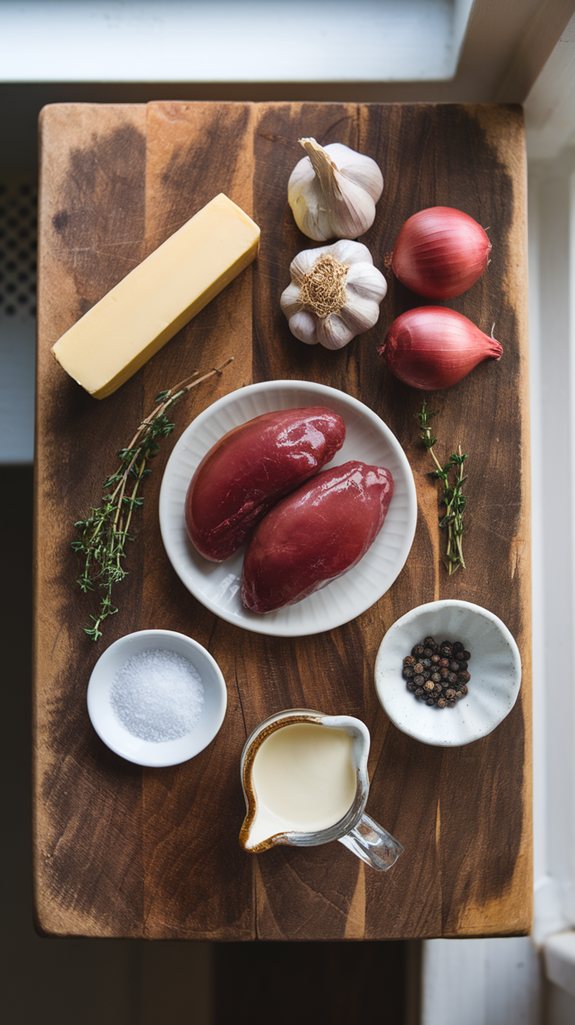
Gordon Ramsay's Chicken Liver Pâté transforms a humble peasant dish into an elegant appetizer that rivals those found in fine dining establishments. This traditional preparation method enhances simple chicken livers into a silky-smooth, luxurious spread that perfectly balances rich, savory flavors with subtle aromatics.
Originally created as a way to use every part of the animal in rural French households, this pâté has evolved into a sophisticated dish that proves simple ingredients can create extraordinary results. Proper searing technique helps develop a rich depth of flavor in the livers before they're blended. Like his famous Michelin-starred restaurants, Ramsay's recipe emphasizes quality ingredients and precise execution. The key lies in proper temperature control and careful attention to cooking times, guaranteeing the livers remain delicately pink inside for the most refined taste and texture.
Using high-carbon steel knives ensures precise cuts that help maintain the delicate texture of the liver.
- 8 ounces chicken livers, cleaned
- 6 tablespoons unsalted butter, softened
- 2 cloves garlic, minced
- 1 medium shallot, minced
- 1 tablespoon fresh thyme leaves
- Sea salt and black pepper
- Water for cooking
- Heavy cream as needed
Begin by trimming the chicken livers of any connective tissue or green spots. Melt one tablespoon of butter in a pan over medium heat and sauté the minced garlic and shallots for one minute.
Add the livers, thyme, salt, pepper, and enough water to barely cover them. Bring to a simmer, cover, and cook for 4-8 minutes until barely pink inside. Let rest covered for 5 minutes, then drain and blend until smooth, gradually incorporating the remaining butter and cream until reaching the desired consistency.
Season to taste and strain through a fine-mesh sieve for the smoothest result. For the best texture, verify the livers are still slightly pink in the center when cooked – overcooking will create a grainy texture and bitter taste.
Allow the pâté to come to room temperature before serving for the best spread consistency, and always use the freshest livers available. The mixture can be pressed through a fine-mesh strainer twice for an extra silky result, though this step is optional for a more rustic presentation.
Brandy-Based Liver Pâté
Adding a splash of brandy improves this classic liver pâté into something truly spectacular, as the spirit's warm, complex notes perfectly complement the rich, savory flavors of the chicken livers.
When you're ready to create this rich and creamy pate recipe, add 3 tablespoons of brandy to your pan right after cooking the livers. Let it simmer for 2 minutes, allowing the alcohol to evaporate while leaving behind its distinctive taste.
You'll notice the brandy's aroma mingling with the other ingredients, creating layers of flavor that raise your creamy pate beyond the ordinary. Like the warm focaccia served at Ramsay's steakhouse, this pâté makes an excellent starter for any meal.
For best results, choose a quality brandy you'd enjoy drinking, as its character will shine through in the final dish. The brandy also helps preserve your pâté, extending its refrigerator life by several days.
Similar to creating buttermilk marinade for fried chicken, combining unique ingredients has been a cornerstone of European cooking traditions since the 18th century.
Like fresh herbs and butter, combining unique ingredients has been a cornerstone of European cooking traditions since the 18th century.
Clean Livers Before Cooking
Three essential steps guarantee properly cleaned chicken livers for your pâté: trim away any visible fat, remove the connecting membrane between the lobes, and cut out any green or discolored spots.
When preparing rich pate dishes, you'll want to work with clean, fresh chicken livers that have a uniform reddish-brown color.
Place each liver on your cutting board and use a sharp paring knife to carefully separate the two lobes. You'll notice a thin, whitish membrane connecting them – gently pull this away.
For liver recipes to turn out perfectly smooth, inspect each piece thoroughly and trim off any tough bits or blood vessels.
Once cleaned, pat the livers dry with paper towels before proceeding with your recipe.
Like his brick chicken technique, proper preparation and attention to detail are hallmarks of Gordon Ramsay's cooking methods.
Preserving Fresh Liver Spread
Once you've prepared your pristine liver spread, proper storage becomes the next priority.
To maintain your Gordon Ramsay pate at its finest, transfer it into clean, airtight ramekins and smooth the top with a spatula. Cover the surface directly with plastic wrap, pressing out any air bubbles to prevent oxidation.
This classic gourmet pate will keep in your refrigerator for 4-5 days when properly sealed. If you're planning ahead, you can freeze portions for up to 3 months – just wrap them tightly in both plastic and foil.
For storage and serving suggestions that'll impress your guests, remember to bring the pate to room temperature about 30 minutes before serving. Present it alongside crusty bread, cornichons, and a dollop of whole-grain mustard for an elegant touch.
Clarified Butter Sealing Method
To guarantee your pâté stays fresh for extended periods, you'll want to master the clarified butter sealing technique that professional chefs rely on.
Start by slowly melting a stick of butter over low heat, letting the white milk solids sink to the bottom. Carefully skim off any foam from the top, then pour the clear golden liquid through a fine-mesh strainer.
Once your chicken liver pate has set in ramekins, pour a thin layer of warm clarified butter over each one.
You'll notice the butter creates a protective seal as it cools and solidifies. This traditional method keeps your spreads fresh for up to two weeks in the refrigerator, while also adding an elegant, professional finish to your presentation.
